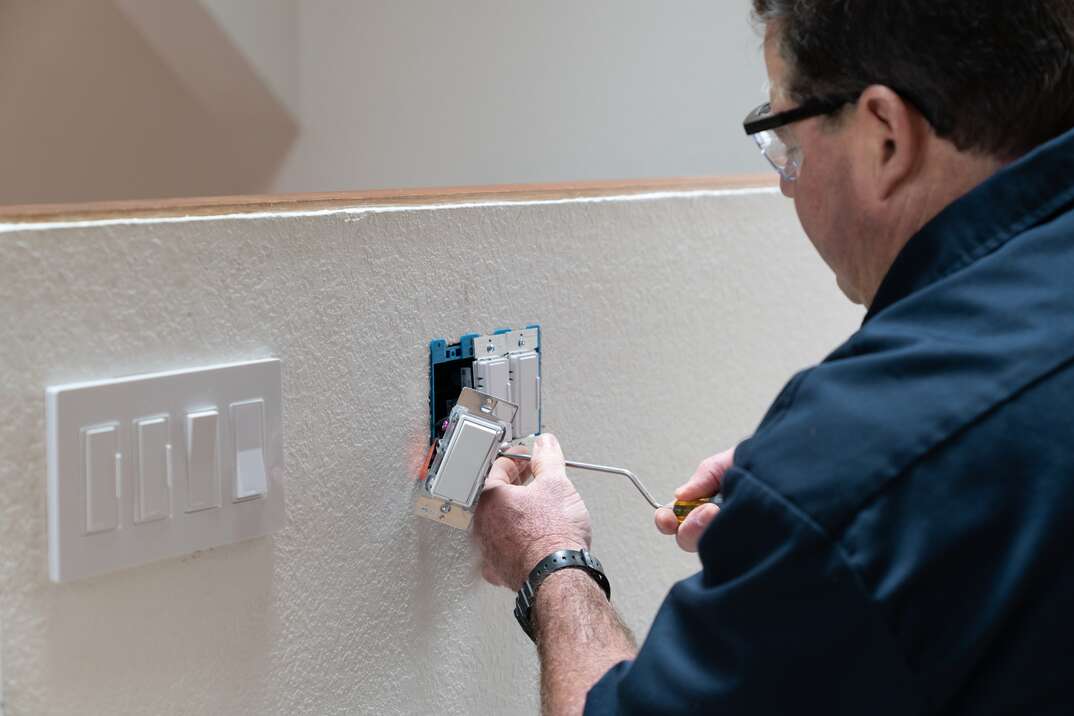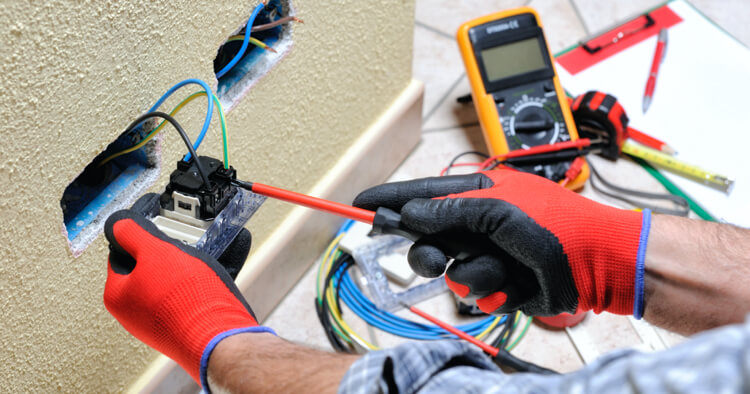How to Install a Bathroom Vanity in 7 Steps

Installing a Bathroom Vanity at a Glance
- Tools: Tape measure, knife, level, saw, wrench, pliers, hammer, screwdriver, pry bar
- Step 1: Prep the area
- Step 2: Remove old vanity
- Step 3: Place new vanity
- Step 4: Attach to wall
- Step 5: Install faucet
- Step 6: Secure vanity top
- Step 7: Reconnect water supply
Putting in a new vanity is a great way to refresh your bathroom. The drawers and doors provide extra space to hide your unsightly toiletries. Prefabricated models come in a wide variety of styles and colors, so it’s easy to find one that matches your aesthetic.
This May Also Interest You: How to Replace or Install a Bathroom Faucet
Installing a new vanity is a simple enough project for DIYers to do themselves. Here’s how.
Things to Consider Before Installing
According to Kitchens and Baths Unlimited, there are several factors you need to consider before installing a bathroom vanity.
First, you’ll want to know how large your vanity should be. If you have a smaller bathroom, it’s best to use a low-profile or wall-mounted vanity. In a larger bathroom, like a master bathroom, you can incorporate a lot more counter space and storage. In a bathroom with two sinks, you may want one continuous vanity with counter space in between.
Where Can I Buy a Vanity?
"Vanity” refers to a sink, countertop and the cabinets or other storage that are built around it. Some vanities come with backsplashes that match the countertop. You can find prefab bathroom vanities at big-box hardware stores or online from various retailers. If you are considering buying online, it is important that you do a fair amount of research and measuring to ensure you get the vanity that best fits your bathroom.
What Tools Do I Need?
Here are some of the tools and materials needed to complete your vanity installation project:
- Tape measure
- Retractable knife
- Beam level
- Saw
- Adjustable wrench
- Joint pliers
- Screwdriver set
- Hammer
- Pry bar
- Flashlight
How to Install a Bathroom Vanity
Installing a new vanity may prove difficult for those who are inexperienced with home improvement projects. If this sounds like you, you might want to call a professional for assistance. Trying to do it yourself might lead to a shoddy installation, which could cause malfunctions or damage later on.
That said, installing a vanity is a feasible DIY project if you have the right tools and experience. According to The Home Depot, here are the steps to install a bathroom vanity:
1. Prep the Area
Measure your space, then purchase a vanity that will fit in your bathroom. Find the water shut-off valves under the sink and turn off the water. Disconnect the drain lines and remove the P-trap.
2. Remove the Old Vanity
Remove the existing bathroom vanity if there is one. Detailed instructions for vanity removal are outlined below.
3. Place the New Vanity
Put the vanity in place and trace around it. Use a stud finder, then mark the studs on the wall as well. Make sure the vanity sits level. If not, you can use shims to make it level. Then, drill holes for the pipes.
4. Secure the Vanity to the Wall
Using drywall screws, attach the vanity to the wall. You can also use wall anchors.
5. Install the Faucet
If your vanity came with a built-in faucet, follow the included instructions for how to secure it to the vanity top. Otherwise, you’ll want to assemble your faucet and attach it to the vanity top before you install the vanity top. Follow the manufacturer’s instructions to install. Or, here’s our step-by-step guide for how to replace a faucet.
6. Secure the Vanity Top
Some vanities come with the top already attached. If that’s the case, you can skip this step. If your vanity and its top are separate pieces, you’ll have to fit them together. The method to attach the pieces varies depending on the type of vanity you choose, so it’s best to follow the manufacturer’s instructions for this step.
7. Connect the Water Supply
Reconnect the water supply lines to the faucet. Install the drain and connect it to the drain trap. When you’re done, apply silicone caulk where the counter meets the wall to fill in the gaps.
More Related Articles
- What’ll a New Toilet Do to Your Bottom Line? Here’s What It Costs
- Tale of the Tile: An Overview of Bathroom Tile Flooring
- How to Remove a Sink Stopper
- Exhaust Options: A DIY Bathroom Fan Installation Overview
- Making It Rain: How Much Does It Cost to Install a Shower?
How to Remove a Bathroom Vanity
You’ll have to take an existing vanity out before you can install a new one. Here’s a step-by-step guide:
1. Shut Off the Water Supply
Again, you’ll want to find the water shut-off valves and turn off the water supply. Put a bucket underneath the tubes to catch any drips, then disconnect the supply lines. To do that, loosen the compression nut and slip the supply tube off of the valve. Set a bucket under the P-trap, then remove the P-trap.
2. Remove the Mirror
According to The Spruce, removing the mirror isn’t necessary. If your mirror is glued to the wall, it’s actually better to leave it there. However, you might want to move the mirror if it sits on the vanity or the vanity’s backsplash. This way, you won’t break it during the removal process.
3. Remove the Vanity Top
Cut the caulk or sealant along the edges of the vanity. Unscrew the countertop from the cabinet if they are separate. If you can’t find any screws, you can try to pry the countertop off the cabinet or use a chisel and hammer. Otherwise, leave them attached and remove them together.
4. Separate the Vanity from the Wall
To make your vanity easier to remove, you can reduce its weight by pulling out the drawers. Remove the screws or nails that attach the vanity to the wall, then pull it away from the wall. Pull off the backsplash if there is one, but be careful not to damage the wall. Dispose of the old vanity and clean up the area before installing a new one.
Since we’re all home now more than ever, being prepared for unexpected home repairs with a plan from HomeServe is important. Having a plan in place gives you peace of mind knowing that you can simply call our 24/7 repair hotline for covered breakdowns. See what plans are available in your neighborhood.


